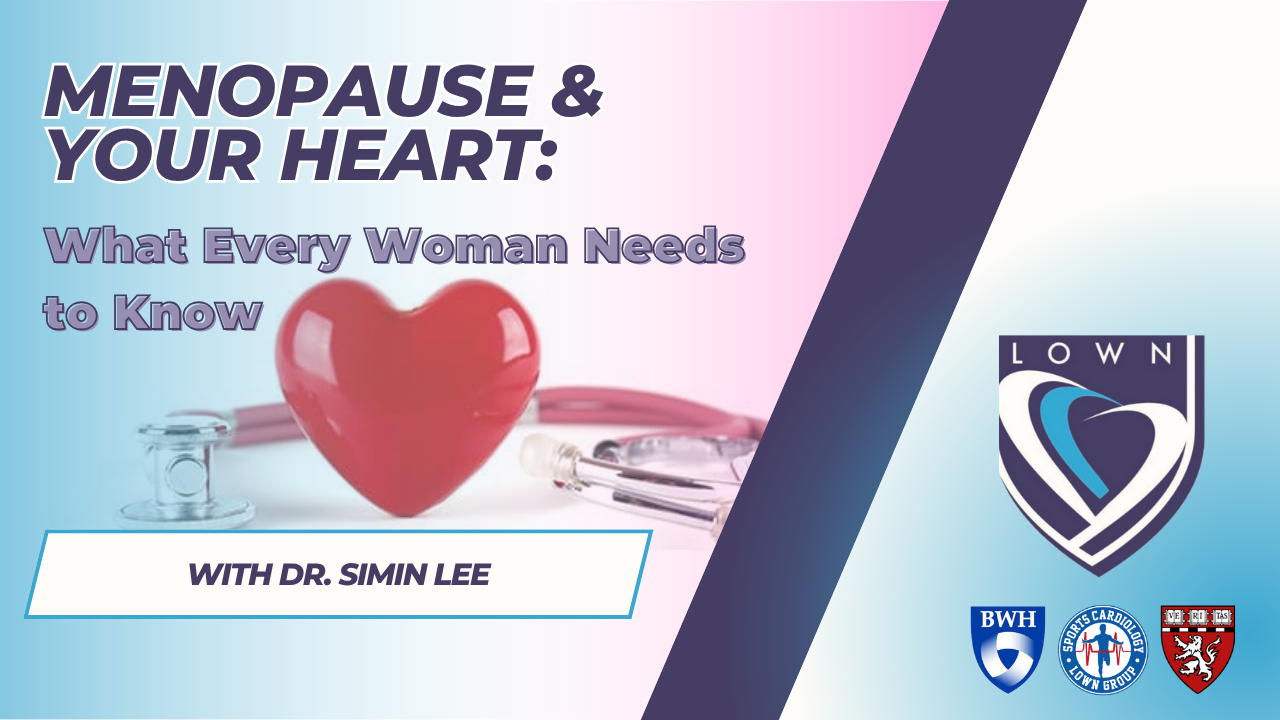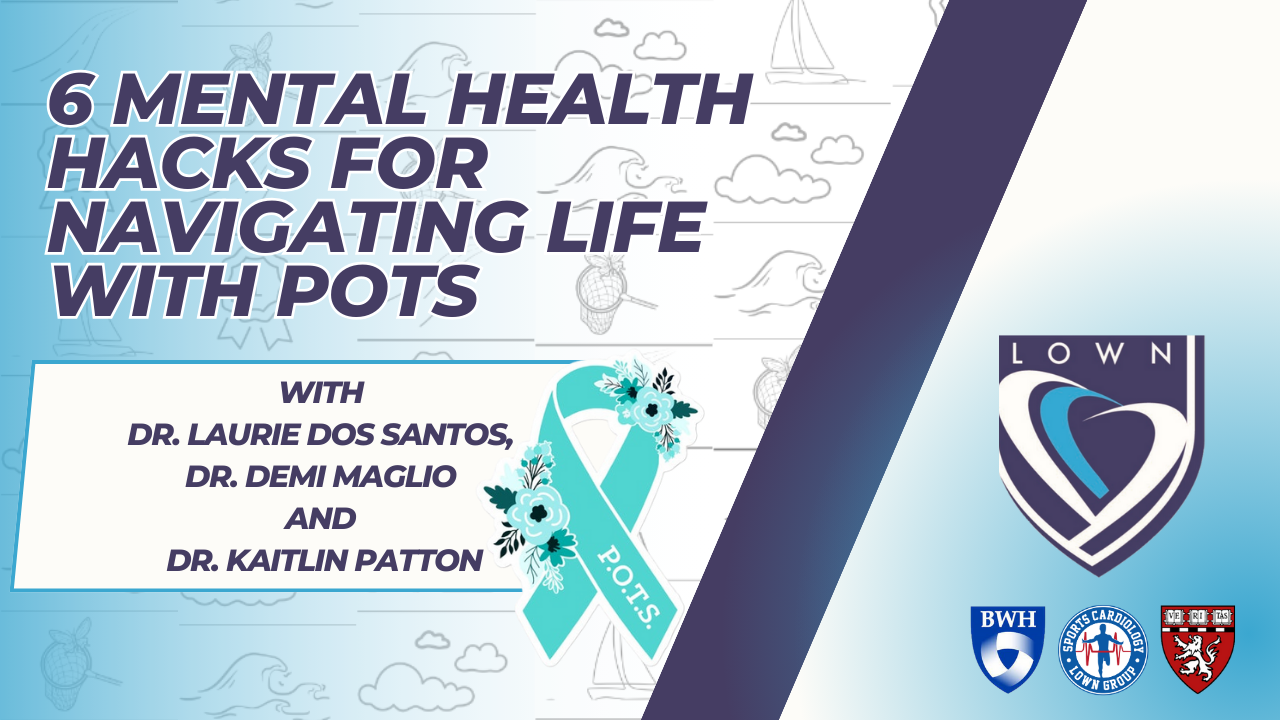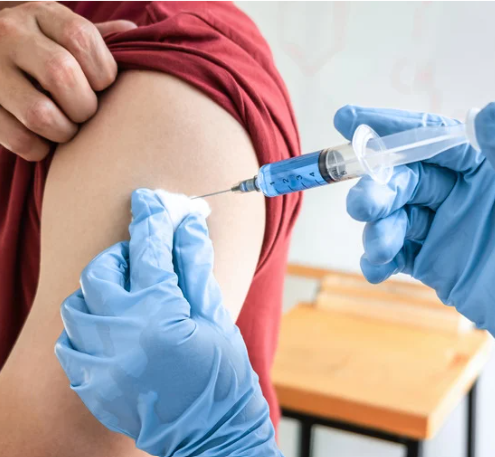Did COVID-19 Mess Up My Heart?
I got sick six months ago. Now I can barely make it up the stairs.

The stairs have become my daily Everest. Just six months ago, the steep climb to my fourth-floor walk-up in Brooklyn was a nuisance only when I was carrying bags of groceries. Now, every time I mount those 53 steps, no matter how slowly, even if I’m empty-handed, my heart rate shoots up to marathon-level. I can actually feel the thud-thud in my throat. Sometimes I have to pause between landings to lie on the floor and stick my feet up in the air to avoid passing out.
This unusually rapid beating can also be triggered seemingly by nothing––sitting up in bed, standing up from the toilet. I first noticed it in March, when I came down with COVID-19. Or at least, it seems clear that I came down with COVID-19. My whole household got sick just before the peak of New York City’s outbreak. Like most Americans in the early weeks of the pandemic, we were unable to get tested, so my primary-care physician diagnosed my illness based on symptoms: endless days of fever, loss of taste and smell, sore throat, nausea, exhaustion, body aches, a hacking dry cough, and an intense struggle to breathe.
Most of these symptoms subsided in mid-April, but some have lingered. For months, I needed a twice-daily dose of a steroid inhaler to breathe normally. I’m more tired and brain-fogged than usual. And I’m still dealing with my racing heart. I’ve always been a bit of a fainter: Years ago, I was diagnosed with orthostatic hypotension, a sudden, rapid decrease in blood pressure that sometimes strikes when I stand up too quickly. But now, instead of fainting once or twice a year, I feel that woozy fade from light to dark daily, sometimes even hourly. A few weeks ago, I stood up to make a smoothie and my heart rate zoomed from lying-in-a-hammock to booming-bass-drum.
The official name for my new heart troubles, as I’ve recently been diagnosed, is postural orthostatic tachycardia syndrome, or POTS. The condition, a puzzling dysfunction of both the heart and the nervous system, messes with how the body regulates involuntary functions, including pulse. POTS is known to affect approximately 500,000 people in the U.S., typically young women in their late teens or early 20s. But now, several cardiologists with whom I’ve spoken say they’re noticing an unsettling trend. Previously fit and healthy women of all ages who have had COVID-19 are showing up at their offices, complaining of inexplicably racing hearts.
The more we learn about COVID-19, the stranger its effects appear to be. Beyond its telltale fever and cough, troubling early evidence has been mounting that the disease can damage many organs in the body, including the lungs, the brain, and—yes, you guessed it—the heart. An array of cardiac dysfunctions has cropped up, confounding researchers and revealing that COVID-19 is a far more complicated and potentially long-lasting disease than people initially expected. These heart ailments have especially gained attention from sports: Some college football players who have had COVID-19 are sitting out this season with myocarditis, a rare condition that can be fatal if untreated. The Red Sox pitcher Eduardo Rodriguez is doing the same.
In a strange way, I feel lucky. POTS is not life-threatening—at least, aside from the risk of head trauma from blacking out. But it is destabilizing, both physically and mentally, to wander around not knowing what my body has in store for me from one minute to the next. Like so many other aspects of this pandemic, this latest syndrome in my parade of illness is mysterious, disruptive, and scarily indefinite.
After my smoothie incident, I called my cousin Emily Wessler, a pediatric cardiologist at Stanford, and asked her what was going on in my body whenever I felt like I was going to pass out. “You’re not getting enough blood to the brain,” she told me, “so the brain says, ‘Shut down! Shut down! Emergency!’” She’d been reading more and more professional chatter about cases of POTS and other cardiovascular disorders post-COVID, so she urged me to make an appointment with a cardiologist. She added that I also might want to speak with a neurologist. There are a lot of doctors to call if your whole body feels like it’s malfunctioning, which is not ideal at a time when millions of Americans are losing their health insurance.
I started with a cardiologist. At NYU Langone, Seol Young Han Hwang hooked me up to an EKG that immediately spit out bad news. “Sinus tachycardia,” it read. “Abnormal ECG.” In other words, my heart was beating much faster than it should have been, given that I was reclining on an exam table. Han asked me to wear a Holter monitor for a week to trace my heart’s vagaries. It showed abrupt daily spikes, during which my heart rate would jump from as low as 51 beats per minute, while at rest, to as high as 163.
I returned to the hospital for a cardiac ultrasound and a test of my heart’s ability to deal with exercise. The echocardiogram was normal. The stress test was not. Susan Polizzi, another Langone cardiologist, had me slowly build up my heart rate to 161 beats per minute on a gradually steepening treadmill. The test confirmed that I’m in good shape for my age (54) and gender, but when Polizzi then had me sit down and rest, my heart rate remained elevated well above 100 bpm for the next four minutes, instead of quickly slowing down as it should have. When it was finally within the normal range, Polizzi told me to stand. My heart rate immediately shot back up, and I felt on the verge of fainting.
“Yup, that’s POTS,” Polizzi said. In layperson’s terms, having POTS means that blood pools too rapidly in your pelvis and legs when you stand up, and your heart goes nuts to compensate. This bodily response is actually an exaggerated version of the system that allows us to walk on two feet. But knowing that doesn’t make the condition any more tolerable. It just makes me jealous of dogs.
POTS has been recognized under different names by doctors for more than 160 years, but the syndrome’s root cause is still poorly understood. Its apparent link to COVID-19 is even more of a mystery, in the most nascent stage of research. “We know much more about POTS in general than we do about post-COVID POTS,” says Matthew Tomey, the director of the cardiac intensive-care unit at Mount Sinai Morningside and one of a growing number of cardiologists who have begun studying the lingering effects of COVID-19 on the heart. “In a series of patients who do have POTS, over 40 percent describe symptoms of a preceding viral illness. And so while we’re still learning more and more about COVID-19 specifically, we have good reason to believe that it is yet another viral illness that could precede the onset of POTS.”
Tomey is in the middle of gathering data on COVID-19 survivors stricken with all manner of symptoms, so he wasn’t able to share any specific numbers on those with POTS that might hint at exactly how widespread the overlapping conditions are. For now, the evidence is anecdotal. But Tomey and the other cardiologists with whom I spoke all are alarmed by the uptick in POTS and other forms of dysautonomia—the dysfunction of the nerves regulating involuntary body functions—in their practices. This is frustrating for everyone involved. POTS’s unclear origins and wide range of symptoms vex doctors. And they make it easy for patients to be dismissed.
Many teens and young women who develop POTS grow out of the condition. But the apparent surge in cases across a wider age range has made it harder for cardiologists to speculate about how long these symptoms might persist or what the lasting consequences could be. POTS’s greatest danger, according to Tomey, is not a heart attack today, but a downward spiral in physical activity that could eventually lead to heart failure in the future. If cases linked to COVID-19 are not an urgent crisis, in other words, they could perhaps be more subtly pernicious. The most significant health damages could be difficult to trace and could arrive far down the road, well after the pandemic ends.
Before leaving my stress test, I asked Polizzi how best to manage POTS. She suggested I buy a pair of compression socks and pants to keep the blood from pooling in my lower half, eat more salt and drink more liquids with electrolytes, and follow a recumbent exercise regime developed for POTS patients. Swimming, rowing machine, recumbent bike—none of which I have access to during a pandemic. (Notably, POTS can overlap with myalgic encephalomyelitis/chronic fatigue syndrome, in which case patients need to be very cautious about how they approach exercise.)
I walked out of Polizzi’s office more confused than ever. Although a POTS diagnosis was a helpful validation, it mostly raised more questions. When would I be able to walk up stairs again? Was this the new normal for the rest of my life? After months of anxieties and baffling ailments, how could it be that two of the best solutions available to me were merely … Gatorade and Spanx? “Some of my POTS patients take frequent shots of pickle juice,” Han later told me at a follow-up visit. Yeah, no thanks.
I was not surprised by the dearth of either cures or data. Like so many others, I’ve come to rely on confusion as the one constant I can expect in this pandemic. Studies have found that most COVID-19 patients produce antibodies that stick around in the body for months, if not longer. Yet when I was finally able to get an antibody test two months after I got sick, I tested negative—twice. Testing can’t confirm that I even had COVID-19 in the first place. But nothing about this disease is simple. As Ed Yong has pointed out in The Atlantic, “most existing antibody studies have focused on either hospitalized patients or those with mild symptoms and swift recoveries.” David Putrino, a physical therapist at Mount Sinai Hospital who has surveyed more than 1,000 people with long-lasting symptoms consistent with COVID-19, has found that about two-thirds of these “long-haulers” who’ve had antibody tests received negative results. (Putrino hasn’t tracked when in the course of their illness they were tested.)
It feels important to note here that I’m not prone to hypochondria. In fact, I’m used to ignoring and pushing through illness and recovery. I once hiked the foothills of the Himalayas two weeks after emergency surgery. I put the finishing touches on a TV news story while in active labor with my daughter. This time, however, I feel both annoyed and limited. I’m stuck in post-COVID limbo, waiting until I can magically walk up the stairs again without feeling like I swallowed Dave Grohl’s drum. Last month, on a long-anticipated family trip to rural Maine, instead of hiking Acadia with my kids, as planned, I had to wave them off into the wild while I stayed back at our Airbnb, reading.
It’s probably going to be a while until research has any new solutions for me. “Right now the emphasis is almost entirely on coming up with a vaccine and testing and mechanisms of the viral disease, and these are obviously all key,” says David S. Goldstein, the chief of autonomic medicine at the National Institutes of Health and the discoverer of the chemical imbalance that leads to fainting. But Goldstein does believe that this focus will shift toward the virus’s lasting effects once we can tame its global rampage. “My guess is that it won’t be long before the main public-health threat from this pandemic won’t be acute critical illness or death,” he told me. “Instead, it will be a post-COVID syndrome, like chronic fatigue syndrome but drastically amplified.”
That future already seems to be arriving. COVID-19 long-haulers have launched their own online support groups and research projects to call attention to lasting symptoms that were at first widely dismissed. Survivor Corps, one of the largest of these groups, has identified 98 different symptoms self-reported by long-haulers, such as brain fog, chronic shortness of breath, digestive issues, dry eyes, fatigue, and depression, along with diagnoses of lupus, diabetes, and tachycardia. Goldstein himself caught COVID-19 and now has mild post-COVID symptoms, such as shortness of breath and fatigue, which he referred to as a “sense that if I don’t have anything else to do, I’m going to go to sleep.”
With POTS, at least, I do have some hope for a less heart-wrenching future. Both Goldstein and Tomey were quick to point out that many astronauts—including, they said, every female astronaut who has ever blasted off into space and spent extended time in zero gravity––have come home with cases of POTS-like orthostatic intolerance. All recovered relatively quickly. As strange as it sounds, a link between space travel and COVID-19 might actually exist: The physical deconditioning that occurs both during prolonged time in zero gravity and while lying in bed battling a virus may play a key role in triggering the syndrome.
As for why women are disproportionately affected, Goldstein has what he calls a “pet theory”: Women’s larger pelvises, where blood pools too rapidly in POTS, need to be more vascularly “stretchy” than men’s to grow a baby, so “some women might simply be too stretchy,” he said. No one, to his knowledge, has been given a grant to study this. “It’s a women’s-health issue,” he said, clearly pained by the lack of scientific resources appropriated to half the human species.
For the sake of furthering post-COVID science, I’ve volunteered my own female body to join Tomey’s study sometime this fall. This will require extra trips up and down my stairs. I asked Tomey if I should change apartments. “No,” he said. “As difficult as those stairs are for you right now, they may be the salvation to the problem.” Such is the damning catch-22 of POTS. A racing heart limits physical activity. But to recuperate, I must be active.
The point, however, may be moot. Less than a week after my conversation with Tomey, a process server showed up at the bottom of my Everest stairs with a letter announcing that my landlord would not be renewing our lease once it ends on November 30. “Is this a joke?” I asked when I walked down to receive it. “Nope,” the process server said, then left.
We’ve since gotten permission to stay through the end of the school year. Still, because no one will tell us why we can’t stay even longer, it’s all just more confusion. The answers to seemingly basic questions––Why are you kicking out a family from their home during a pandemic? Why am I still sick? When will I get better?––are somehow maddeningly elusive. Clutching the letter in one hand and the banister in the other, I climbed the 53 stairs, one by one, pausing on each landing to lie down and catch my breath between ascents.
The post Did COVID-19 Mess Up My Heart? appeared first on The Atlantic.
Recent Blog Posts






